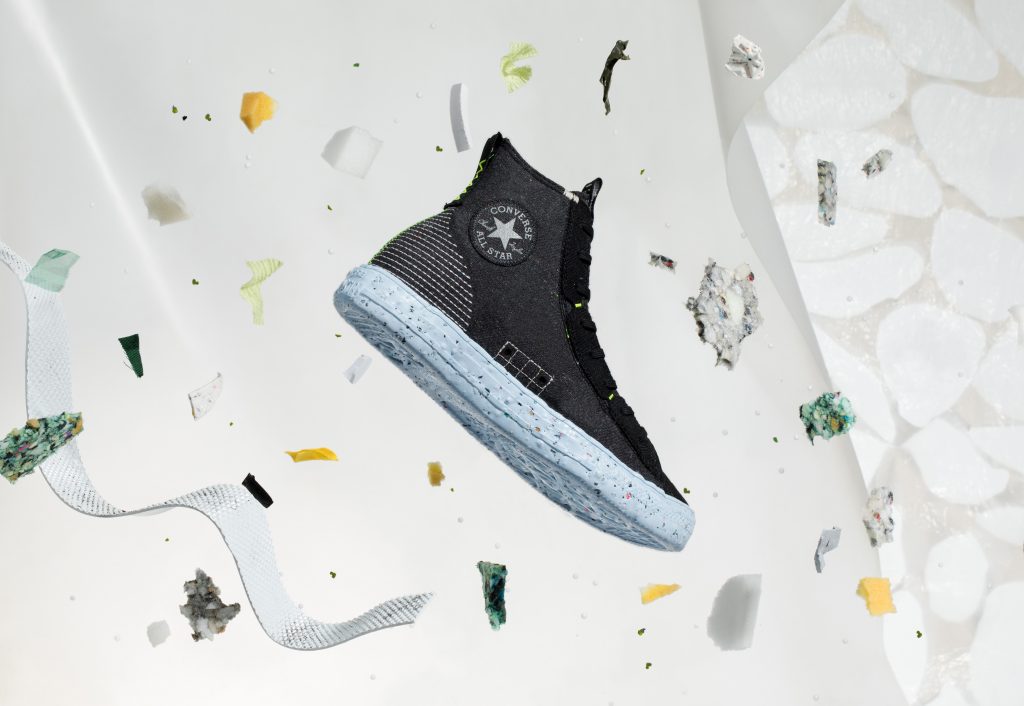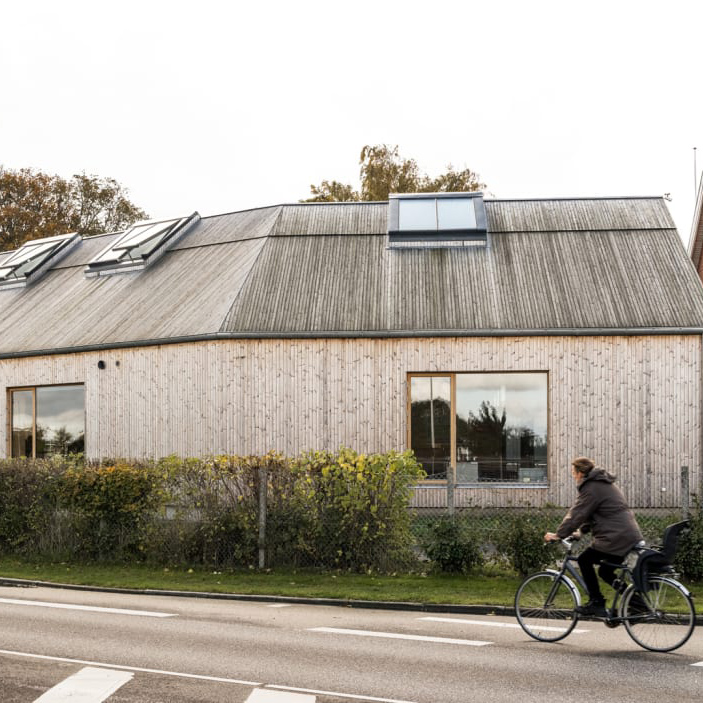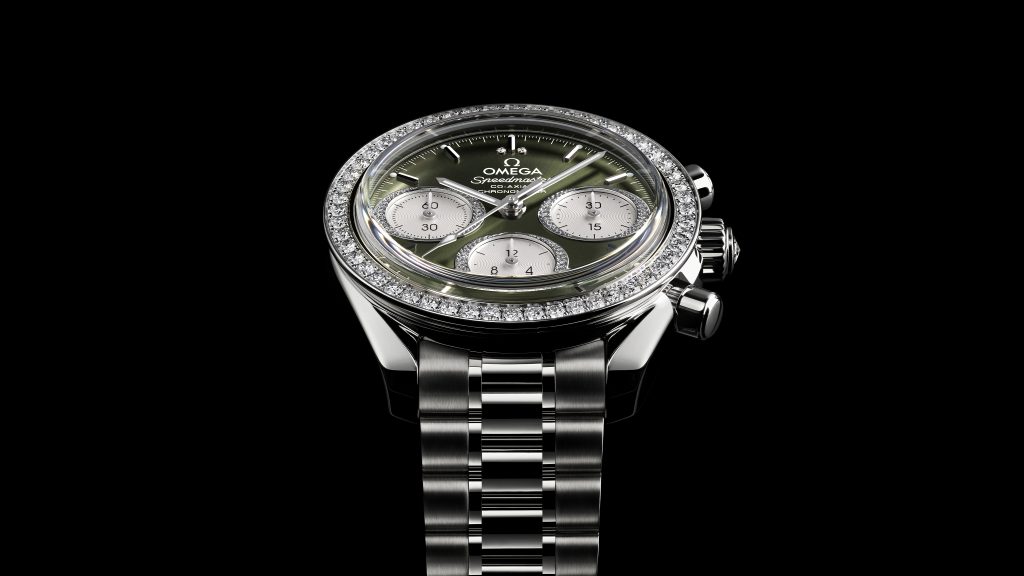The Mission Behind Nike’s Space Hippie Sneakers
The brand’s new program for scrap material reuse has the potential for vast positive impact across the industry
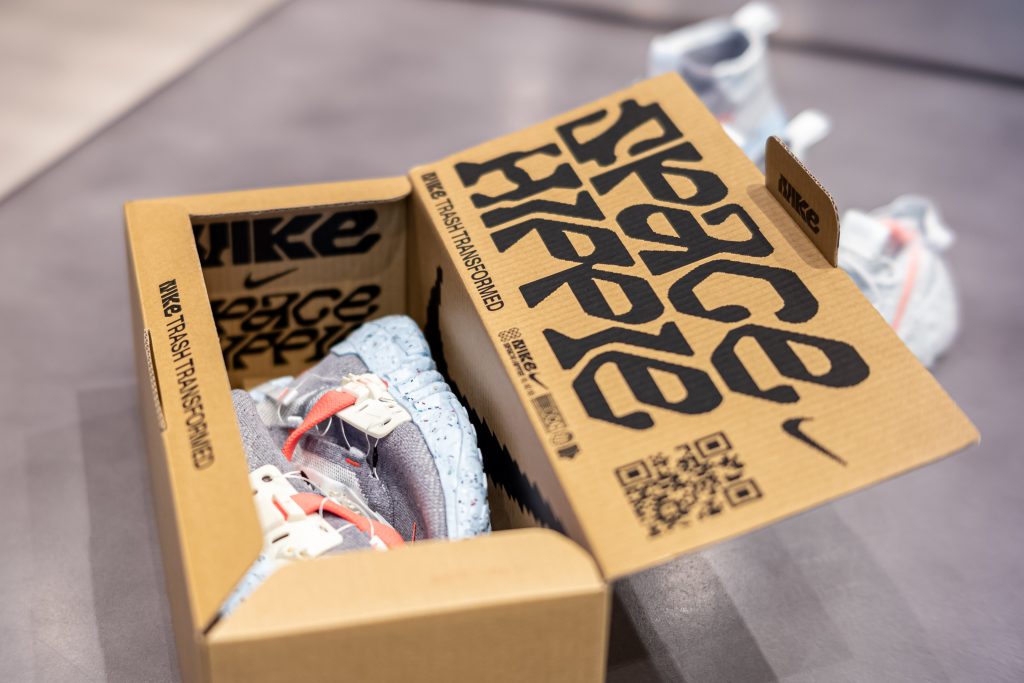
Part of Nike‘s move toward more sustainable practices, the new Space Hippie collection (from the overarching Space Hippie Program) is crafted from scrap materials reclaimed from factory floors. Several other companies use discarded fabrics and yarns, but this is the first foray for the sportswear giant—and a significant step for such an omnipresent and influential brand. The four styles (aptly named Space Hippie 01, 02, 03 and 04) are based on existing Nike designs, but the materials lend each an undeniably unique appearance. Blending elements from the past and the future, lo-fi and high-tech, our planet and outer-space, these sneakers clash in perfect harmony and are the proof of concept for a sustainability toolkit that can be leveraged across the brand’s product portfolio.

“Space Waste Yarn” composes sneaker bodies. According to Nike, it is 100% recycled material that consists of plastic water bottles, discarded T-shirts and scrap yarn. The brand crafts cushioning from off-cuts discarded during the production of ZoomX foam—originally developed for the VaporFly. Finally, Crater Foam, a blend of foams and rubber that lessens the use of virgin material (and reduces the product’s overall carbon footprint), makes up the sole.

We sat down with a Nike spokesperson at last week’s Space Hippie launch. “We have a tremendous responsibility to do this work, and an amazing opportunity to do it right, and do it by scale,” he tells us about the endeavor. While the Space Hippie program is launching with a collection of four designs, its overarching goal is to change the way the brand designs and manufactures. “It’s really about the first phase of creating a toolkit,” he says, “And then it’s about creating a radical expression design that would really feel like a Nike product.”
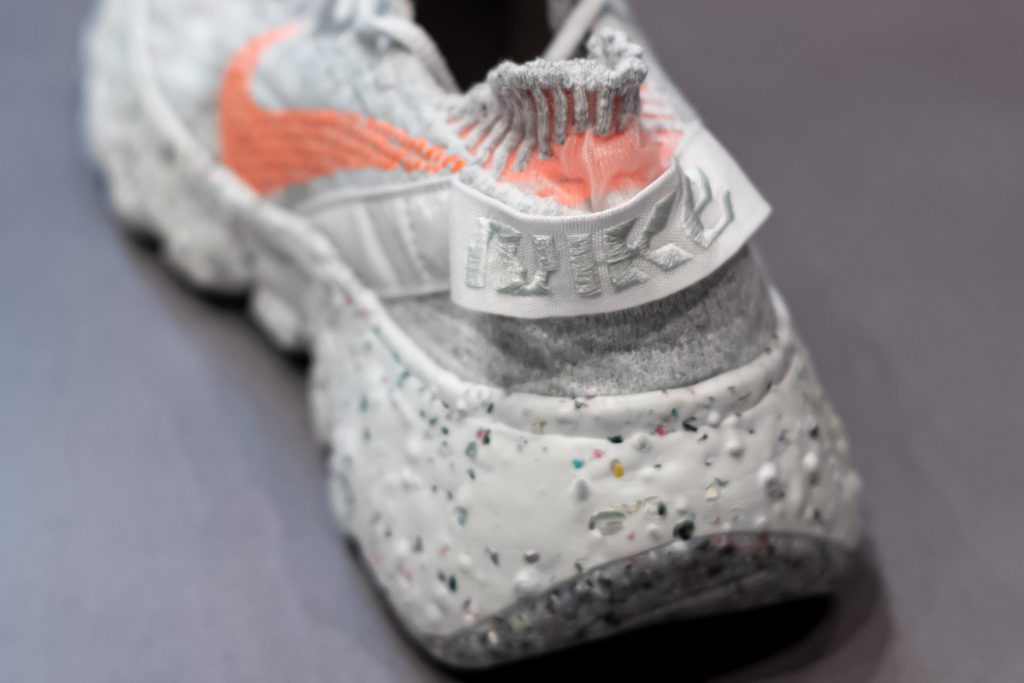
“The mission was clear from day one was, ‘How do you make the lowest carbon shoe of all time?'” he continues. After speaking with the brand’s sustainability indexing team, he understood that no new materials could be created for the sneakers.
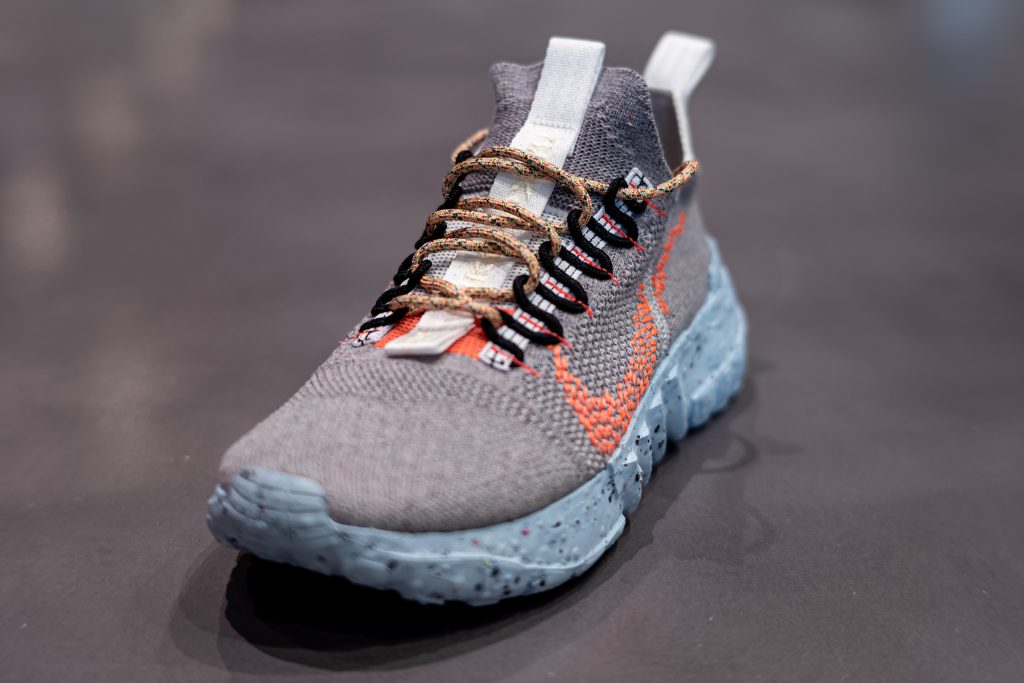
With that in mind, the jump-off point for the design team was inspired by NASA and, more specifically, the idea of creating shoes on Mars. “If you’re going to build a shoe on Mars, how would you go about that? What would that experience be like?” the spokesperson asks. “Well, you can only take certain things up with you and you’d have to find materials there… There was this kind of thinking about living off the land and making use of what you have. It’s like the hippies… space hippies.”

This led Noah Murphy-Reinhertz (sustainability leader of Nike’s Explore Team Space) to embark on a treasure hunt for non-virgin materials. Murphy-Reinhertz was, we’re told, “on trash-man, dumpster–diving expeditions where he was going around all of our spaces on campus and NXT Space and APCC (Advanced Products Creation Center)” looking for scrap materials discarded in the manufacturing of various different Nike products.
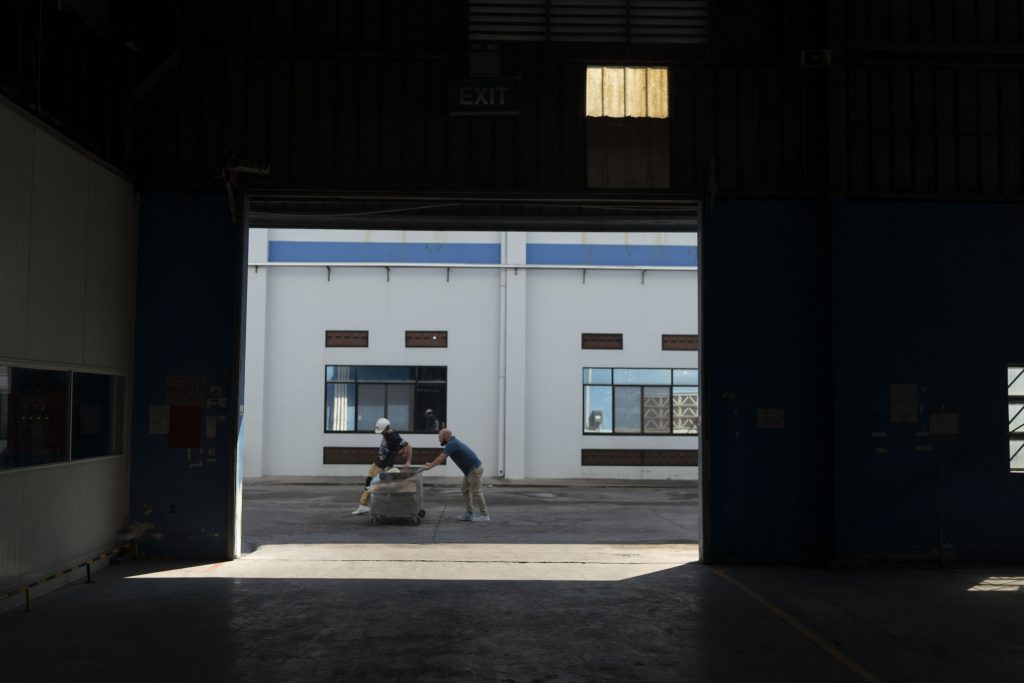
One goldmine was the bins full of off-cuts from STOLL knitting machines, on which FlyKnit fabrics are sewn. While not an overly wasteful process, there are some discarded materials in the chain. As he says, “They’re not overflowing—they don’t dump the bins out multiple times a day—but we can use that material and put it directly back into our supply chain.”
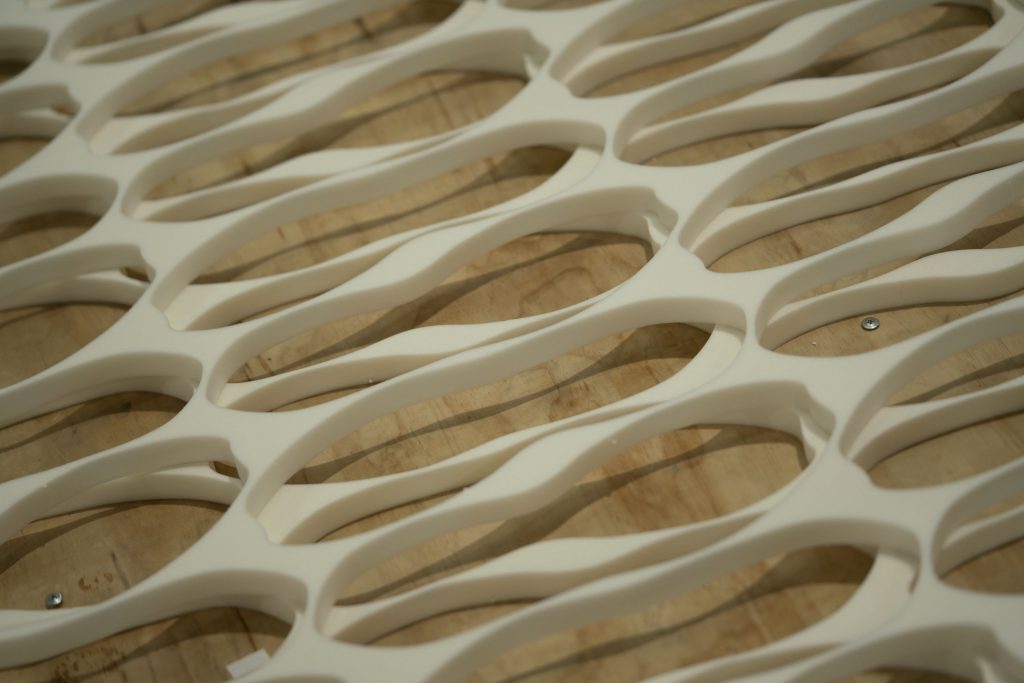
The team also found opportunities in some of the brand’s more wasteful production processes, like the creation of midsoles for the Vaporfly 4% Flyknit. The spokesperson explains, “When you’re cutting the midsoles for that shoe, it’s basically like creating a kitchen-table-size thing (like with cookie dough) and you’re punching out that negative space. This material was just kind of piling up on factory floor. We didn’t want to throw away… yet nobody had cracked what to do with it. So the team was like, ‘Let’s start there and find a way to break it down and put it back together in a really low-energy way.'”

The team knew that all the behind-the-scenes research, development and upcycling would be appreciated by consumers, but the shoes wouldn’t be successful if they weren’t also aesthetically appealing and wearable. “We wanted to adhere to our same world-class design principles—they have to be these objects of art, desire and performance,” he says. “But they definitely look different. And why? Well, they’re made of trash.”
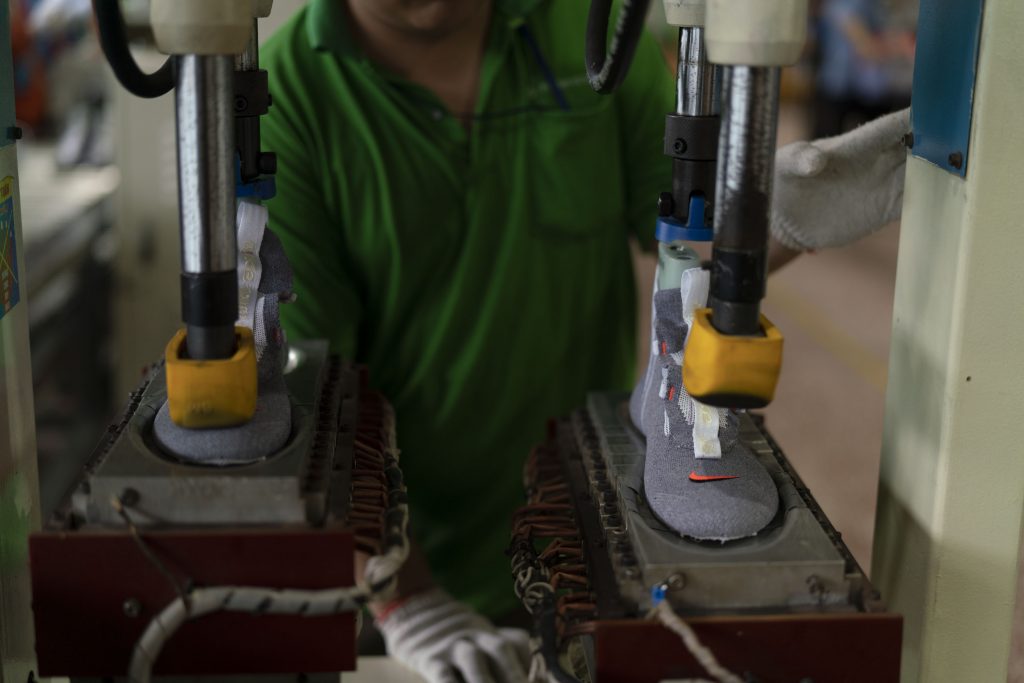
Our trash is incredibly technical—it’s beautiful

It’s this glorious clashing of the technical and the organic, the astronaut and the hippie, that makes the sneakers so successful in theory and in reality. “Our trash is incredibly technical—it’s beautiful,” he says. “It’s designed to like the exact specifications that you would build a rocket-ship with the same types of parameters and constraints, but it’s also really loose and free and kind of got this wavy vibe to it so it just works so perfectly.”

Nike isn’t viewing this collection of four designs as their first, final or even most impactful move toward sustainability. It’s the overarching mindset and design approach that are crucial to the Space Hippie Program being a longterm and scalable aspect of many more releases. “One of the interesting things about this project was the discipline that the design team had: these are radical expressions of design and creativity, and at the same time, they create a toolkit of parts that can be used by anyone in the design organization,” he explains. “So that you could create an Air Force One or a Nike Blazer or a Chuck or another globally recognized icon using this toolkit that will make the most sustainable version of that thing. That’s where we get to make hundreds and hundreds of thousands and millions of units that will create the massive positive impact. That’s what we’re trying to do as we get to this carbon-neutral, carbon-positive future.”
From the packaging (100% recycled material and soy-based inks) to the supply chain, manufacturing and the shoes themselves, this first release from the Space Hippie Program is a substantial step forward—one of what the brand hopes will be many more. As the spokesperson says, “We will be a different Nike, at the end of this.”
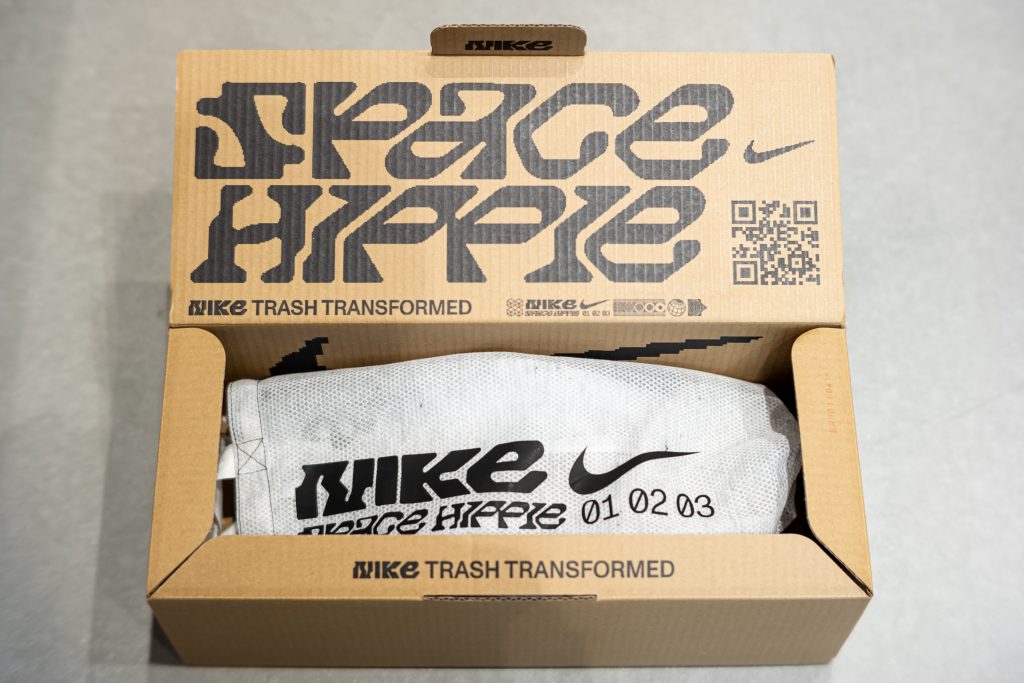
The Space Hippie collection—the first release from the Space Hippie Program—will be available for purchase this spring.
